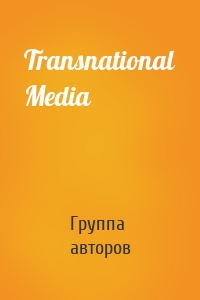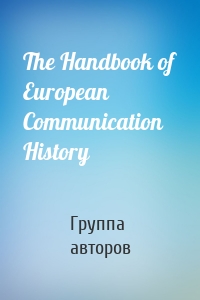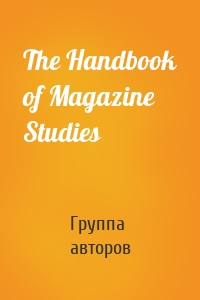Кинематограф, театр
992 кн.
Hollywood 1938
In <i>Hollywood 1938</i>, Catherine Jurca brings to light a tumultuous year of crisis that has been neglected in histories of the studio era. With attendance in decline, negative publicity about stars that were «poison at the box office,» and a spate of bad films, industry executives decided that the public was fed up with the movies. Jurca describes their desperate attempt to win back audiences by launching Motion Pictures’ Greatest Year, a massive, and unsuccessful, public...
| Автор | Catherine Jurca |
Siegfried Kracauer's American Writi...
Siegfried Kracauer (1889–1966), friend and colleague of Walter Benjamin and Theodor Adorno, was one of the most influential film critics of the mid-twentieth century. In this book, Johannes von Moltke and Kristy Rawson have, for the first time assembled essays in cultural criticism, film, literature, and media theory that Kracauer wrote during the quarter century he spent in America after fleeing Nazi-occupied Europe. In the decades following his arrival in the United States, Kracauer commented...
| Автор | Siegfried Kracauer |
Edgar G. Ulmer
Edgar G. Ulmer is perhaps best known today for <i>Detour,</i> considered by many to be the epitome of a certain noir style that transcends its B-list origins. But in his lifetime he never achieved the celebrity of his fellow Austrian and German émigré directors—Billy Wilder, Otto Preminger, Fred Zinnemann, and Robert Siodmak. Despite early work with Max Reinhardt and F. W. Murnau, his auspicious debut with Siodmak on their celebrated Weimar classic <i>People on...
| Автор | Noah Isenberg |
RKO Radio Pictures
One of the «Big Five» studios of Hollywood’s golden age, RKO is remembered today primarily for the famous films it produced, from King Kong and Citizen Kane to the Astaire-Rogers musicals. But its own story also provides a fascinating case study of film industry management during one of the most vexing periods in American social history. <i>RKO Radio Pictures: A Titan is Born </i>offers a vivid history of a thirty-year roller coaster of unstable finances, management battles, and...
| Автор | Richard B. Jewell |
Videoland
Videoland offers a comprehensive view of the «tangible phase» of consumer video, when Americans largely accessed movies as material commodities at video rental stores. Video stores served as a vital locus of movie culture from the early 1980s until the early 2000s, changing the way Americans socialized around movies and collectively made movies meaningful. When films became tangible as magnetic tapes and plastic discs, movie culture flowed out from the theater and the living room, entered the...
| Автор | Daniel Hemenway Herbert |
Closely Watched Films
How do films work? How do they tell a story? How do they move us and make us think? Through detailed examinations of passages from classic films, Marilyn Fabe supplies the analytic tools and background in film history and theory to enable us to see more in every film we watch. Ranging from D. W. Griffith's <I>The Birth of a Nation</I> to James Cameron’s <I>Avatar</I>, and ending with an epilogue on digital media, <I>Closely Watched Films</I> focuses on...
| Автор | Marilyn Fabe |
Pixar and the Aesthetic Imagination
In <I>Pixar and the Aesthetic Imagination</I><I>,</I> Eric Herhuth draws upon film theory, animation theory, and philosophy to examine how animated films address aesthetic experience within contexts of technological, environmental, and sociocultural change. Since producing the first fully computer-animated feature film, Pixar Animation Studios has been a creative force in digital culture and popular entertainment. But, more specifically, its depictions of uncanny...
| Автор | Eric Herhuth |
Eco-Sonic Media
The negative environmental effects of media culture are not often acknowledged: the fuel required to keep huge server farms in operation, landfills full of high tech junk, and the extraction of rare minerals for devices reliant on them are just some of the hidden costs of the contemporary mediascape. <I>Eco-Sonic Media</I> brings an ecological critique to the history of sound media technologies in order to amplify the environmental undertones in sound studies and turn up the audio in...
| Автор | Jacob Smith |

























